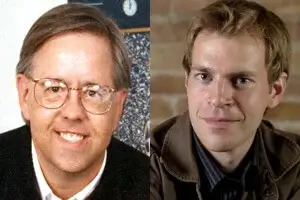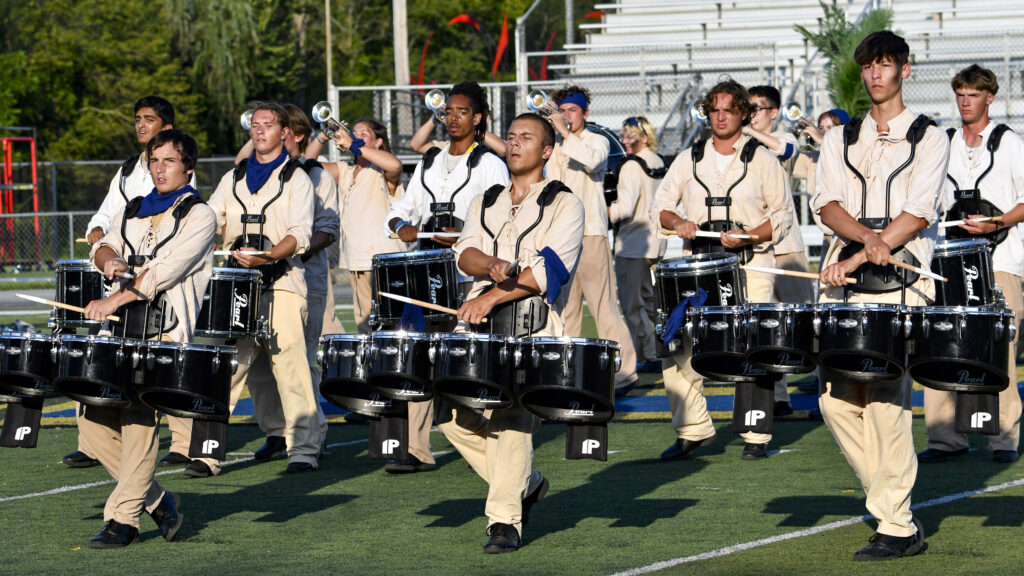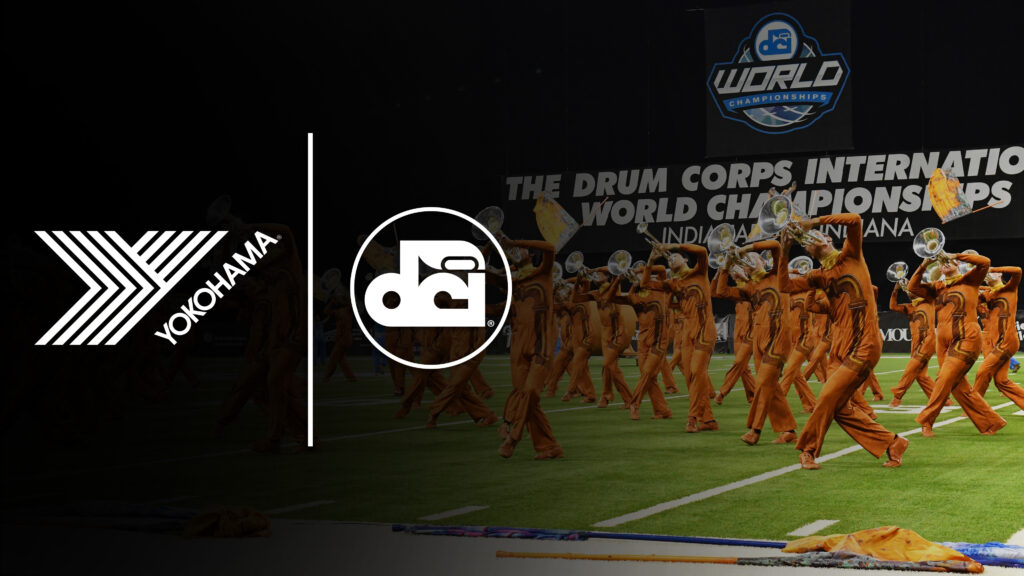Top 12 is a periodic DCI.org series featuring Q&A interviews with individuals making news in the drum corps activity. This inaugural edition features author Nicholas Waerzeggers and DCI Hall of Fame member Steve Vickers who over the last three years have collaborated on a new book titled “Drum Corps International The First Decade: 1972-1981.” Written by Waerzeggers with editing and design by Vickers, the 212-page comprehensive history of Drum Corps International from its founding through 1981 was pieced together through extensive research and interviews with some 250 individuals. Debuted at the DCI World Championships this past August in Indianapolis, the book is now available for order online.
1. Give us a brief overview of this book. What does this edition cover?

Steve Vickers & Nicholas Waerzeggers
Steve Vickers: The book is an expansive look at not only the first decade of Drum Corps International’s history, but also an interesting view of what led up to the formation of the organization by way of what the activity was like during the 1960s.
2. How did this project get started, and ultimately how long did it take to put together?
3. Did you expect there to be this much information to write about before you started?
4. Who did you have the opportunity to talk to when doing research for the book?
5. Who were some of your favorite or most interesting interviews?
6. Is there anything you learned putting this together that you didn't know about the drum corps activity before or were surprised to learn?
7. Are there any anecdotes in particular you liked writing about?
8. Were there any you had to leave on the "cutting room floor" or any you thought twice about including?
9. What do you suppose might be the reaction of readers who experienced drum corps in the 1970s?
NW: Hopefully there is an element of escape, nostalgia and a subsequent dialogue. I also hope those in some of the smaller corps who I often struggled to contact will find a voice to supplement the history. That will be of great importance if the project moves forward. The Santa Clara Vanguard alumni section on its website, for example, meant I could easily contact someone from any section of the corps from any year within minutes. For some of the smaller corps and even for a few corps that crept into Finals for a couple seasons, all the Google searches in the world might not stir up any contacts. Ultimately, I hope the book finds its way into some living rooms and rouses up some old memories.
10. Why should people who are newer to drum corps read this book?
SV: Knowing where the activity came from is very important to put into context what is currently going on in the activity. There have been many changes, improvements and some disappointments over the years, but having a broad view helps participants, staff and parents understand what they are involved in currently. In addition, I think this book offers a very important lesson in how an activity affects the lives of everyone who come into contact, whether as a marching member, a staff member, a parent or a fan.
11. Have you started any research for or are there any plans for a follow up 1982-1991 edition?
SV: Dan and I haven’t had an opportunity to discuss the future of the project. I designed this book as a companion to the photo book published in 2007, with the cover design carrying on the visual theme. I certainly hope Nic and I are able to continue the history of DCI to the next volume and beyond, but that’s up to Dan and his staff. Right now the importance of getting the two books into many people’s hands is the first priority. If sales are sufficient to warrant going on to the next decade, both Nic and I are available and interested in continuing the series.
12. Where can people find this book or any of the other drum corps history books that have been published over the years?
SV: “The First Decade” is currently available from DCI online or by phone at 317.275.1212. Special to it’s release, it’s also currently available as a set with “The First 35 Years in Photos” edition I mentioned at the beginning of the interview. Both volumes of “A History of Drum and Bugle Corps” can be found at DrumCorpsWorld.com or by calling 800.554.9630. Another new book “The Art of Drum Corps World,” which is a 370-page collection of more than 750 pieces of line art, cartoons and illustrations that have appeared on the pages of Drum Corps World over the last 38 years, is also currently available. View all books available through Drum Corps International. View all books available through Drum Corps World.





